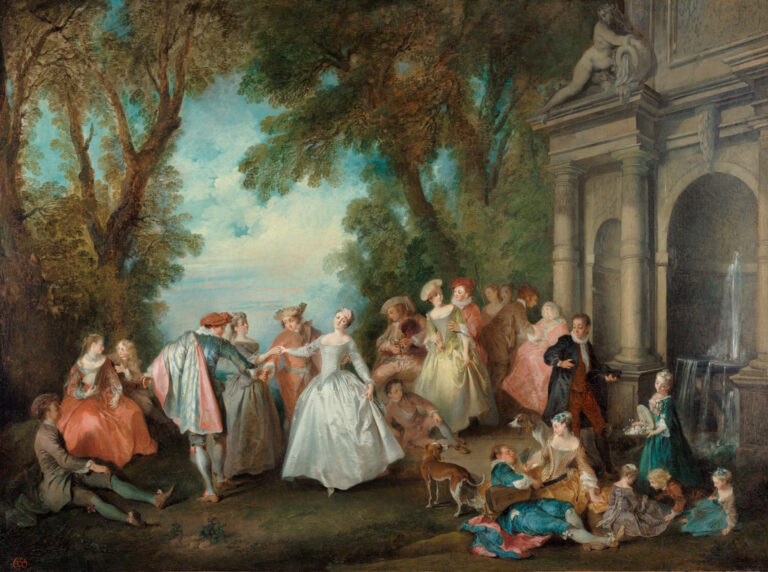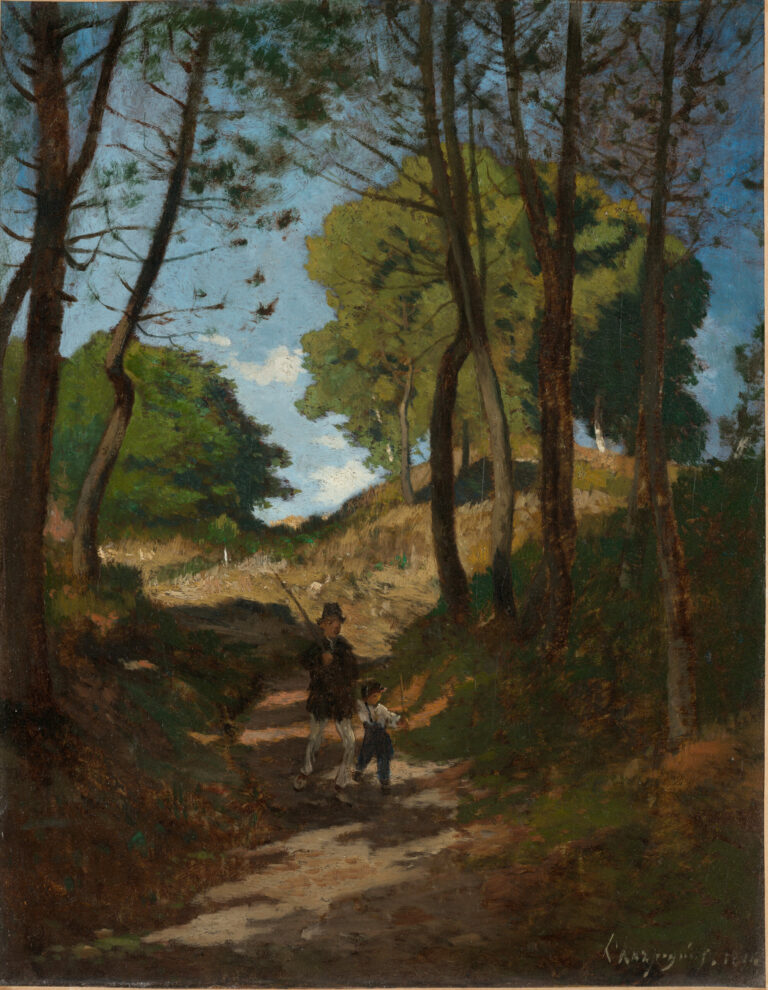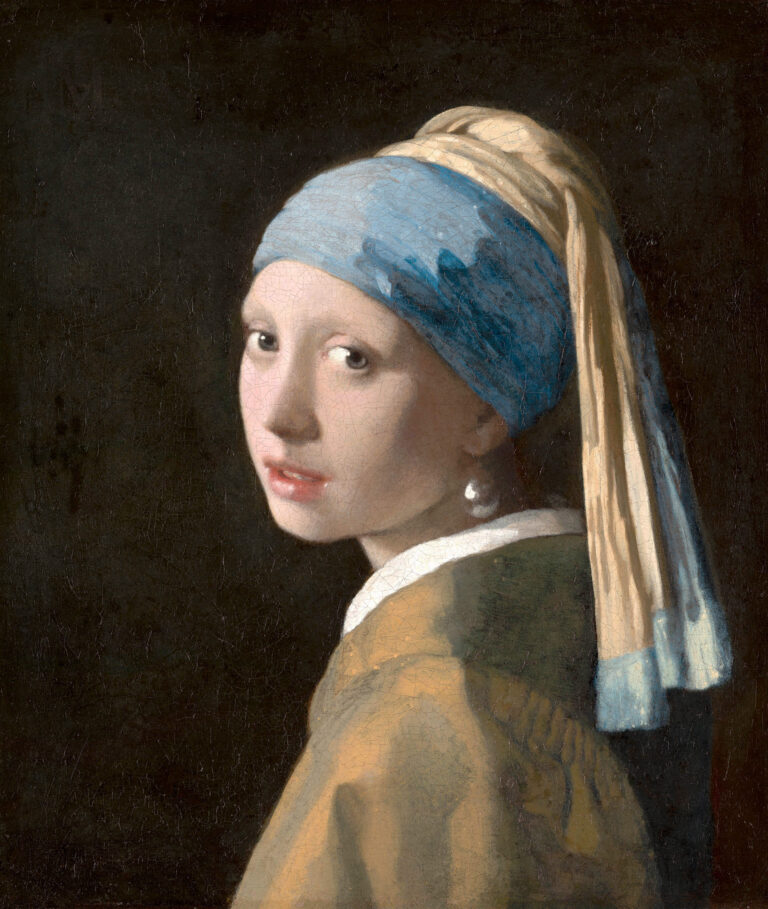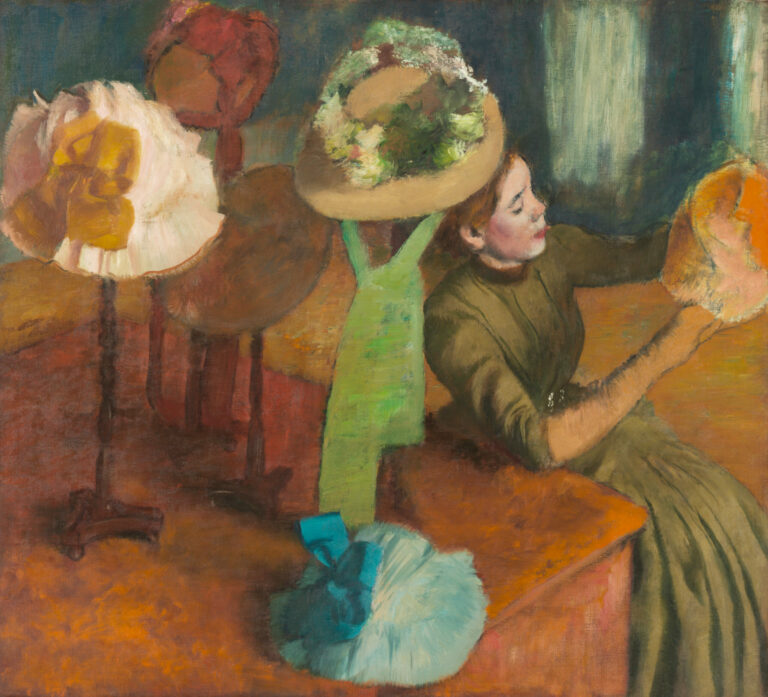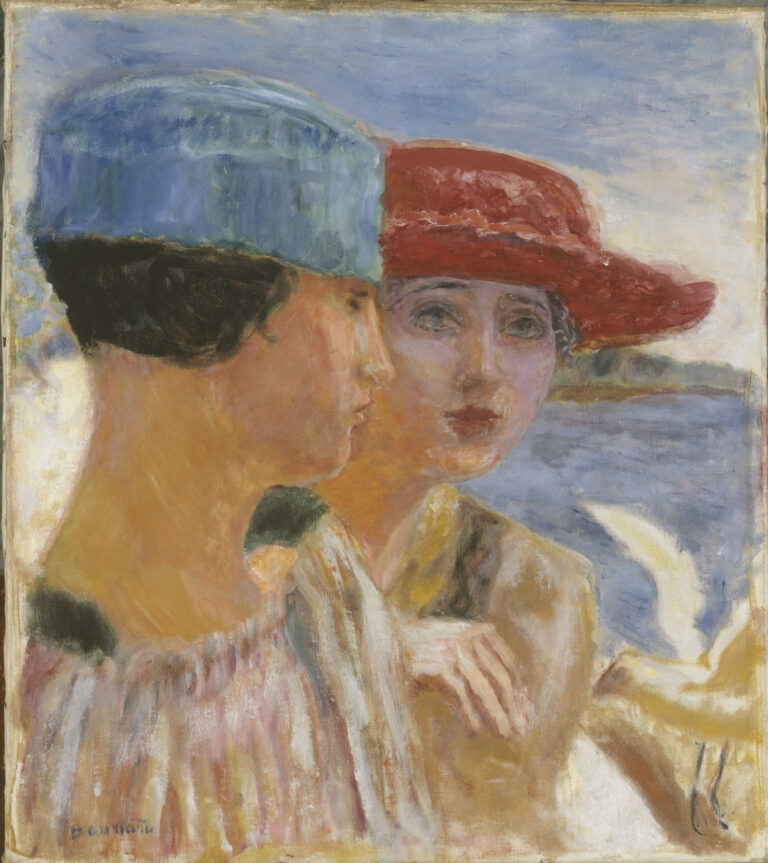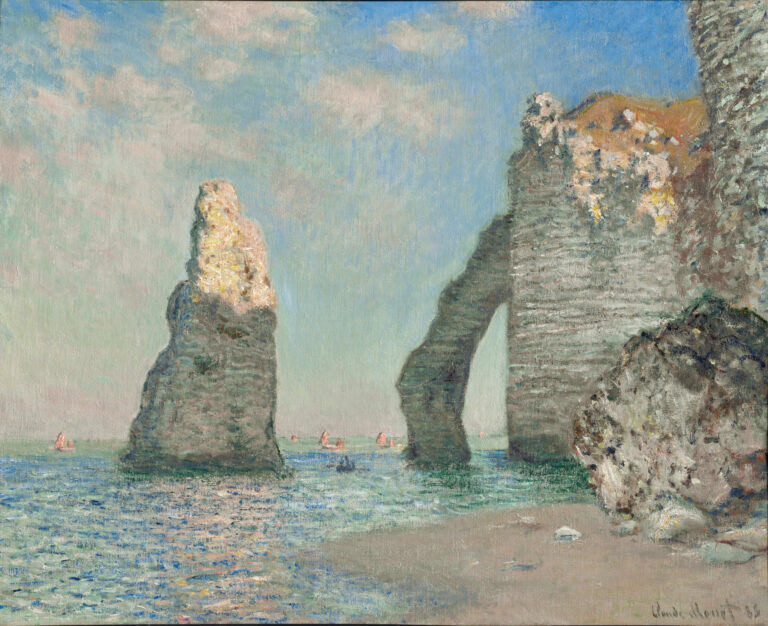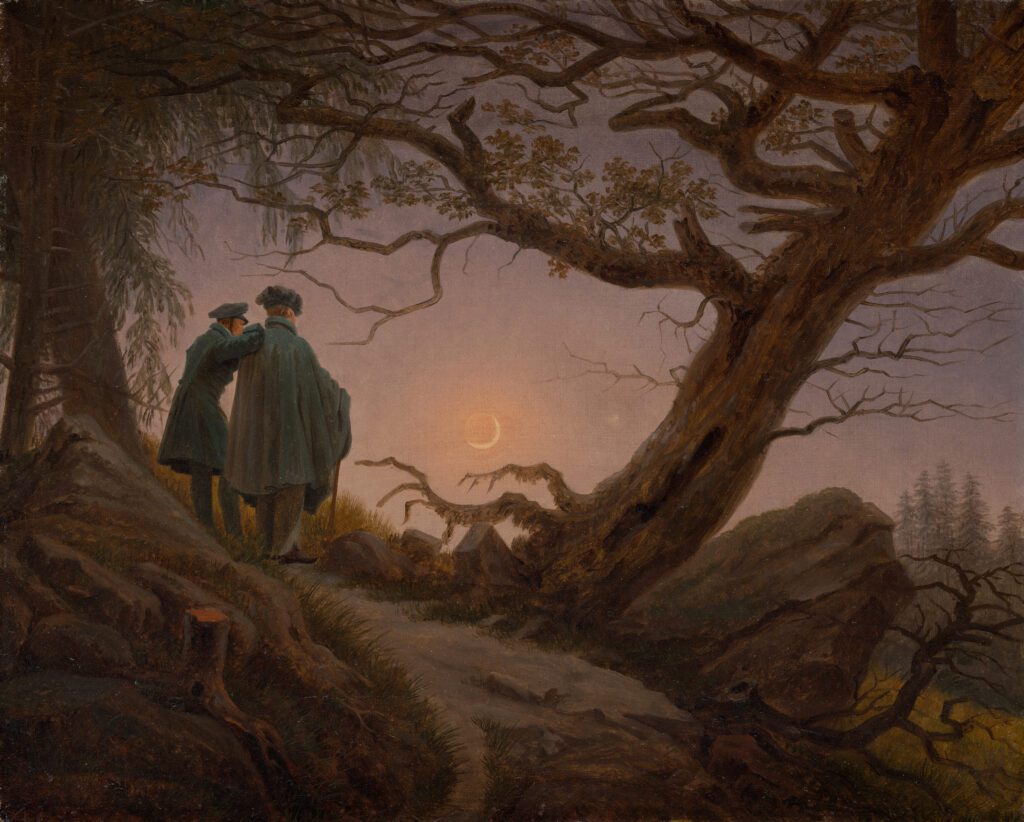
In this captivating canvas, Friedrich invites us to share a moment of contemplative intimacy where two silhouettes, draped in their long cloaks, pause to observe the crescent moon that delicately illuminates the horizon.
The composition creates a tension between the gnarled tree trunks, veritable natural cathedrals, and the twilight sky with its rose-tinted hues. The artist positions us as silent witnesses to this scene where man seeks to penetrate the mysteries of the universe. The striking contrasts between the darkness of the foreground and the ethereal glow of the nocturnal orb convey the spiritual quest so dear to German Romantics. Friedrich orchestrates a visual symphony in which each element—the imposing rocks, the tormented branches, the winding path—contributes to expressing that sublime melancholy which reminds us of our place in the grand theatre of nature.
Further Information
- Two Men Contemplating the Moon, by Caspar David Friedrich, circa 1825-1830
- 34.9 x 43.8 cm
- The Metropolitan Museum of Art, Fifth Avenue, New York, displayed in gallery 199
- https://www.metmuseum.org/art/collection/search/438417
Caspar David Friedrich (1774-1840) remains the supreme embodiment of German Romanticism in painting. Profoundly marked by the early loss of his mother and several siblings, he developed a melancholic sensibility that permeates his entire oeuvre. Trained at the Copenhagen Academy, he established himself in Dresden where he elaborated a unique pictorial language, transforming landscapes into spiritual experiences. Admired by the Prussian court before falling into obscurity, Friedrich was not rediscovered until the early 20th century. His canvases, where the contemplation of nature becomes divine revelation, have profoundly influenced modern art, from the Symbolists to the Expressionists, and continue to move us with their evocative power

